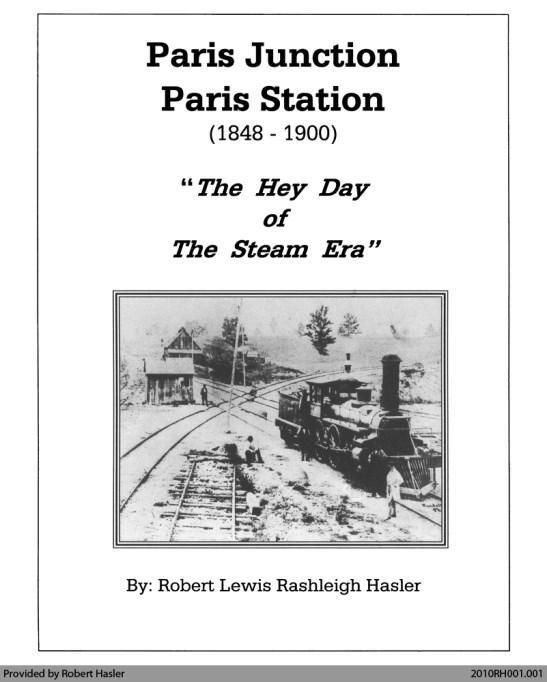
3 minute read
Paris, A Town of Many Names & Locals
Once upon a time, in the charming streets of downtown Paris, a group of friends embarked on an exploration of the town's rich history. As they strolled through the bustling avenues, their eyes were captivated by the magnificent buildings and thriving businesses that had stood the test of time. However, it was not just the architectural wonders that caught their attention, but also the intriguing nicknames given to different parts of the town, which served as convenient identifiers for the locals.
One of the most enduring names was "Barkers Bush," a homage to the Barker family who had once owned the land and established the Barker House and Farm in the early days of Paris. This name, like many others, had seamlessly integrated into the fabric of everyday life. From the town's inception, Paris had been divided into four distinct sections: Upper Town, Lower Town, The Flats, and The Junction.
Advertisement
Upper Town, also known as the old South End or South Ward, was home to the original "Main Street“ (Mockingbird Hill) It held great historical significance. This area was a hub of activity, hosting hotels, schools, churches, a fairground, a fire hall, a library, and the original Town Hall It also housed one of the first gypsum mills, giving rise to the presence of “Old Mill St." Nestled between Race Street (the mill race) and Hillside (Mile Hill) lay Gilston Parkway, named after the Gilston Farm that once spanned the entirety of what is now known as "Fould's Survey" or affectionately referred to by locals as "Sewer City." The name stemmed from the presence of the pollution control plant situated along the Grand River, emitting a pungent odour during the summer months. Atop Mile Hill, gypsum mines dotted the landscape, while Rest Acres Road derived its name from a former campground and swimming pool resort called "Rest Acres" near Apps Mill. On the other end of Rest Acres was

The Norfolk
Schyler’s Hill with apple orchards surrounded by vast farmland. Highway #2 West was simply known as Woodstock Hill, and the post-World War II development became the Victoria St. Survey or the War Time Homes subdivision. Lower Town, the heart of Paris, was what locals now refer to as downtown. It owed its significance to the convergence of the Nith and Grand Rivers, providing an ideal setting for the construction of dams and the generation of waterpower for mills and industries. With two dams on the Nith (the Penmans & the Wincey) and a network of raceways, Lower Town thrived. The main raceway, which connected the Nith River to the Grand River, passed through the center of Lower Town, traversing under Grand River St. North and eventually emptying into the majestic Grand River.
Continued on page 13
MARKET ST. PARIS at “The Junction” ca. 1900
This particular area became known as "Coney Island," an endearing nickname reminiscent of an actual island. To reach Upper Town from Lower Town, one would traverse Grand River Street South, crossing the Nith River Bridge eventually arriving at "Barracks Hill." This name was derived from the Salvation Army Barracks located at #2 Grand River St. South. Just after the bridge, a road named Distillery Lane led to Distillery Hill. A set of stairs provided a shortcut to the original Paris High School, perched atop Woodstock Hill. Today, that area has been known as Queens Ward, now home to Queens View Retirement Living.

On the other side of the William Street Bridge, beyond the confines of the Flats, lay an area that was once cricket fields and a gypsum mill. However, with the construction of a new dam by John Penman and the Willow Street raceway, the Flats became a bustling district, powered by the colossal No. 2 & 3 Penmans Mills.
Lastly, the Junction encompassed the entire area atop "Quality Hill“ (GRSN) In bygone days, it constituted a separate town built by the railway, complete with hotels, saloons, a grocery store, and even its own post office. So rich was its history that Bob Hasler has dedicated an entire series of books to "The Junction," offering a treasure trove of fascinating stories The friends recommended visiting the Paris Museum and Historical Society, where these books were available for those hungry to delve deeper into the town's captivating past.
As the friends continued their journey through downtown Paris, they marveled at the layers of history that the town had preserved. Each nickname and area reflected the vibrant tapestry of Paris, a place where the past intertwined seamlessly with the present, leaving an indelible mark on the hearts of its inhabitants.


